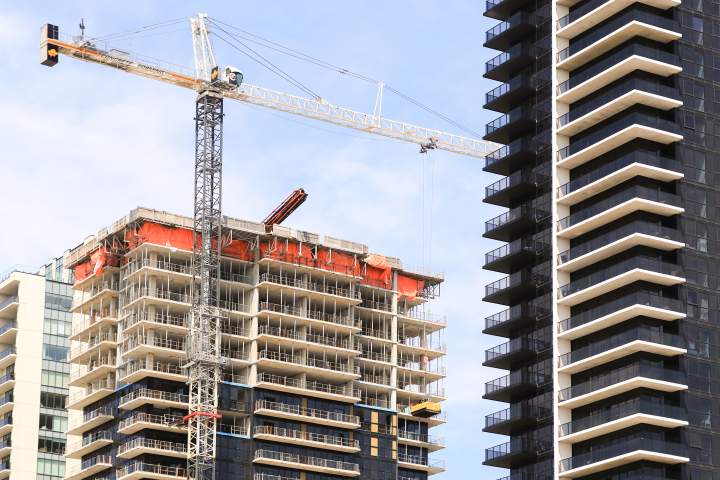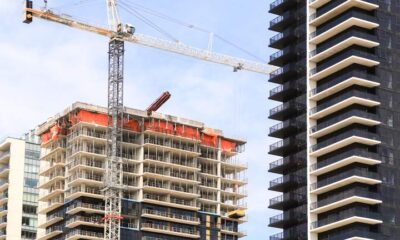Business
Ontario Government Launches New Housing Initiatives to Revive Market

The Ontario government is taking decisive action to revitalize its struggling housing market as home construction in the province has stagnated. In recent months, housing minister Peter Bethlenfalvy has outlined a series of new measures intended to stimulate building activity, hoping for a noticeable market recovery by spring 2026. This comes after a steep decline in housing starts in 2025, as prospective buyers waited for more affordable prices, leading to a drop in pre-construction sales.
The government’s ambitious target to construct 1.5 million homes by 2031 has increasingly been viewed as unattainable. Recently, Bethlenfalvy acknowledged that this goal is no longer seen as a “hard target.” To address these challenges, the Ontario government introduced new legislation in October, including Bill 17 and Bill 60, aimed at creating conducive conditions for construction in the upcoming year.
New Legislative Measures and Financial Incentives
Bill 17 allows for the deferral of development charges (DCs), enabling developers to pay these municipal fees upon transferring property to buyers instead of at the time of issuing building permits. This legislation, initially introduced in June but enforced only as of November, is designed to alleviate financial pressure on builders. “If you have to pay these costly DCs up front, that takes away from being able to get shovels in the ground,” said Flack, a representative from the government. “The more cash flow we can free up for them to get building, the sooner we get more houses built and the cost will come down.”
In addition, the province has proposed measures to streamline approvals and site plan controls, aiming to establish consistent standards for parking and landscaping. The recent Fall Economic Statement also presented a significant incentive for first-time homebuyers, announcing the waiver of the provincial portion of the Harmonized Sales Tax (HST) for new homes priced under $1 million. This initiative mirrors the federal plan introduced in the Carney government’s budget and is expected to save first-time buyers up to $130,000 on new home purchases.
These combined initiatives are intended to inject vitality into the beleaguered home construction sector, with Flack expressing hope for a surge in housing starts and projects. “We’re setting it up for next year,” he stated.
Industry Skepticism and Future Challenges
Despite the government’s efforts, skepticism remains prevalent within the building industry. Scott Andison, a representative from the Ontario Home Builders Association, described 2025 as a “very bleak year for builders,” which has adversely affected homebuyers as well. While acknowledging the government’s broader approach to housing development, he emphasized that the proposed first-time homebuyer exemption would have minimal impact, affecting less than five percent of the market.
Andison advocated for a more focused Ontario-led approach, specifically calling for the removal of the provincial sales tax from all new home purchases. He urged the government to act decisively to rejuvenate the industry in 2026. Premier Doug Ford has indicated interest in extending the sales tax discount for all new homebuyers, but Bethlenfalvy has dismissed this proposal due to associated costs.
The Ontario government is also considering an overhaul of its $1.2 billion Building Faster Fund, which rewards municipalities for meeting housing construction goals. Concerns have been raised by mayors about the program’s effectiveness, as it currently focuses on housing starts—metrics beyond a municipality’s control—rather than building permits, which are more manageable.
Flack acknowledged the need for adjustments. “We’re working closely with our municipal partners. We want to come up with a new housing, building faster fund,” he stated, indicating that better metrics are on the table to support builders.
While the Ontario government is refraining from emphasizing its housing target of 1.5 million homes by 2031, any improvement in the housing market is seen as a positive step. Flack underscored the importance of tangible results: “It’s about shovels in the ground, it’s the results, and that’s what we’re trying to create those conditions to see those results.”
-

 Politics1 week ago
Politics1 week agoSecwepemc First Nation Seeks Aboriginal Title Over Kamloops Area
-

 World4 months ago
World4 months agoScientists Unearth Ancient Antarctic Ice to Unlock Climate Secrets
-

 Entertainment4 months ago
Entertainment4 months agoTrump and McCormick to Announce $70 Billion Energy Investments
-

 Lifestyle4 months ago
Lifestyle4 months agoTransLink Launches Food Truck Program to Boost Revenue in Vancouver
-

 Science4 months ago
Science4 months agoFour Astronauts Return to Earth After International Space Station Mission
-

 Technology3 months ago
Technology3 months agoApple Notes Enhances Functionality with Markdown Support in macOS 26
-

 Top Stories1 month ago
Top Stories1 month agoUrgent Update: Fatal Crash on Highway 99 Claims Life of Pitt Meadows Man
-

 Sports4 months ago
Sports4 months agoSearch Underway for Missing Hunter Amid Hokkaido Bear Emergency
-

 Politics3 months ago
Politics3 months agoUkrainian Tennis Star Elina Svitolina Faces Death Threats Online
-

 Politics4 months ago
Politics4 months agoCarney Engages First Nations Leaders at Development Law Summit
-

 Technology4 months ago
Technology4 months agoFrosthaven Launches Early Access on July 31, 2025
-

 Top Stories3 weeks ago
Top Stories3 weeks agoFamily Remembers Beverley Rowbotham 25 Years After Murder




















